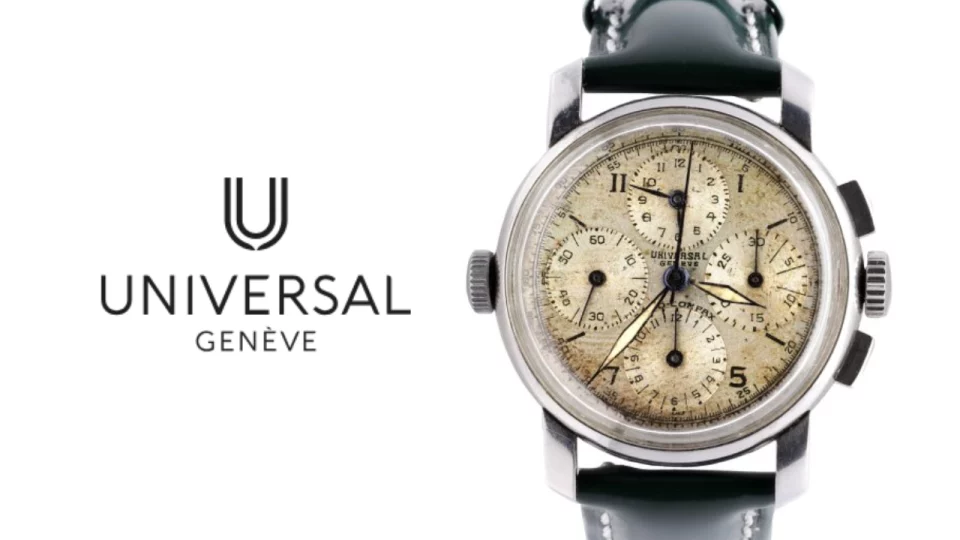The world of horology has long been defined by innovation, legacy, and an unquenchable thirst for timeless design. Among the pantheon of great watchmakers, few names evoke as much reverence as Universal Genève (UG). Once a force to be reckoned with, UG’s reputation was built on a series of pioneering achievements and iconic timepieces. Yet, despite its illustrious history, the brand experienced a prolonged dormancy following its struggles during the Quartz Crisis of the late 20th century.
Now, after more than three decades in the shadows, Universal Genève is making a comeback that promises to blend heritage with modernity, heralded by its acquisition by Breitling and the establishment of a new strategic direction.
Table of Contents
The Storied History of Universal Genève
Founded in 1894, Universal Genève was quick to distinguish itself as a forward-thinking Swiss watch manufacturer. The brand carved its niche through an impressive catalog of chronographs and sophisticated timepieces, earning its place among industry titans such as Patek Philippe and Rolex. By 1935, UG had moved its headquarters to Geneva’s prestigious Rue du Rhône, famously setting up shop between these two powerhouses—a location that symbolized its standing in the watchmaking elite.
During its heyday, UG introduced a variety of highly sought-after models. Among these, the Tri-Compax stands out as a legendary multi-function chronograph that captured the imaginations of collectors worldwide. In fact, it has often been compared to Patek Philippe’s ref. 1518, a perpetual calendar watch that commands astronomical sums at auction. The Tri-Compax offered an aesthetically and functionally similar experience but at a more attainable price point, earning UG a reputation as more than just a “poor man’s Patek.”
In addition to its diverse array of chronographs, UG was responsible for crafting specialized timepieces for niche audiences. Pilots, medical professionals, and even film directors found tailored chronographs within UG’s offerings. For instance, the Film Compax, which featured a scale that measured film footage in feet per second, is an example of UG’s unique dedication to serving varied professional needs. Such models are now coveted rarities, enhancing the brand’s aura among vintage watch enthusiasts.
The Iconic Polerouter: A Testament to Innovation
One of the most significant milestones in UG’s history was the creation of the Polerouter in 1954. This timepiece was not only functional but also carried the touch of a young, yet-to-be-famous designer—Gérald Genta. At the age of just 23, Genta was tasked with designing an anti-magnetic watch for Scandinavian Airlines, whose polar flights faced magnetic field challenges. The result was the Polerouter, a watch that became synonymous with the UG brand and showcased Genta’s early genius, which would later shape horological icons like the Audemars Piguet Royal Oak and the Patek Philippe Nautilus.
The Polerouter’s blend of engineering prowess and sleek design made it an instant classic. Its unique micro-rotor movement was both efficient and elegant, a precursor to the bold innovations Genta would later champion. Today, vintage Polerouter models remain relatively accessible on secondary markets, allowing collectors to own a piece of horological history imbued with both technical achievement and design excellence.
The Challenges of the Quartz Crisis
Despite its successes, Universal Genève’s story took a dramatic turn during the 1970s and 1980s, when the Quartz Crisis disrupted the Swiss watch industry. The advent of affordable, highly accurate quartz watches from Japan posed an existential threat to traditional mechanical watchmaking. While some brands adapted or found ways to endure, UG struggled. By 1989, the company had essentially ceased operations. Stelux Holdings purchased the brand name and made attempts at a revival in 1994 and 2005, but these efforts failed to recapture the brand’s former glory.
The Long-Awaited Comeback
After a 35-year hiatus, UG has finally begun its journey back to prominence, thanks to Breitling’s acquisition of the brand. The move, announced in December, was a clear signal that UG would be returning with the backing of an industry leader committed to honoring its storied past. Breitling’s CEO, Georges Kern, has positioned the brand’s revival as a collaborative effort, enlisting the help of a 30-member advisory panel composed of passionate UG collectors and experts.
These “Watch Illuminati,” as they’re jokingly called, serve as a sounding board for UG’s new direction. The panel’s role is not merely ceremonial; it has been involved in shaping strategic choices from product design to marketing strategies. The dedication to including this community of aficionados speaks volumes about Breitling’s commitment to authenticity and respect for UG’s heritage. Panel member and noted collector @Bazamu noted that the group’s purpose is to offer genuine feedback on pivotal decisions. The collaboration has imbued the revival process with a sense of ownership shared by the brand’s most devoted fans.
The First Steps Forward: UG’s New Website
As a tangible first step in its resurrection, UG launched its inaugural website—a long-overdue entry into the digital age. This online platform represents more than just a digital presence; it’s a declaration of intent. With a modern design and nods to vintage aesthetics, the new logo has sparked conversations among collectors and horology enthusiasts. While opinions on the logo’s contemporary elements have been mixed, its release marks the beginning of a deliberate effort to balance heritage with modernity.
“In the new logo, you can see clear nods to the most iconic logos of the past,” said Dandy, a collector involved in the advisory panel. Indeed, the logo serves as a symbol of the delicate line UG must walk: honoring its legacy without becoming a mere replica of its former self.
